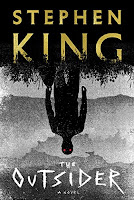Dirty politics and clear stats
>> Monday, September 09, 2013
 TITLE: Betrayed by Trust
TITLE: Betrayed by Trust
AUTHOR: Ana Barrons
Catherine Morrissey is in Washington DC to see what the hell is going on in the investigation into the murder of her sister, a political aide. Right after the murder she thought she could trust Joe Rossi, a journalist looking into the murder, until he turned around and put some of her most hurtful, humiliating confidences in an article. She's angry with the man, but it turns out she might need his help.
This was a mess. Catherine is beyond stupid (I mean, seriously, Joe is a journalist, and she always knew it, and that he was investigating her sister's murder!), and their interactions felt faked and forced. Plus, I objected to all the slut shaming. There's a lot of contrasting of the purity and innocence of Catherine (She's a schoolteacher! She dresses modestly! She even looks pure!) against the sluttiness of Blair, culminating in a lovely spot of victim-blaming. On Blair: "From all accounts, it was here that her promiscuity had really taken off. And mostly likely killed her." Thanks, but no thanks.
MY GRADE: A DNF.
 TITLE: The Norm Chronicles
TITLE: The Norm Chronicles
AUTHOR: Michael Blastland and David Spiegelhalter
Risk and how people understand it, process it and react to it is a big part of my job, and I've often had the occassion to hear David Spiegelhalter speak about the issue (he's Winton Professor for the Public Understanding of Risk at Cambridge). He talks good sense and is very clear and accessible, so I was glad to see he'd written a book with Michael Blastland, who makes some excellent programmes on Radio 4 (More or Less is a particular favourite, stats nerd that I am).
The book was good, I thought. The subtitle is "Stories and Numbers About Danger" and you pretty much get what it says on the tin. Starting with stories about prudent Prudence, average Norm and reckless Kelvin, they look at a number of different areas and explore both how people react to the risks involved and what the risks really are. The last point is the strongest element of the book. Risk is extremely hard to explain to people, but through the use of the startlingly clear concepts of MicroMorts and MicroLives, I think they've got it. The weak point was, in my opinion, the stories that opened each chapter about Prudence, Norm and Kelvin. They felt a bit off and like they obscured the issues rather than illuminated them. My reaction to them was more "WTF?" than "a-ha!".
Nothing new here for someone with a background in the issues, but as a primer, I think this would work really well.
MY GRADE: A B.










0 comments:
Post a Comment